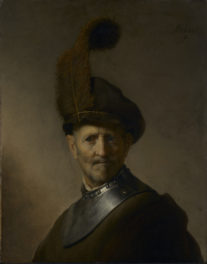
Two Fishermen on an Aspidochelone (detail) in a bestiary, about 1270, unknown illuminator, possibly made in Thérouanne, France. Tempera colors, gold leaf, and ink on parchment, 7 1/2 × 5 5/8 in. The J. Paul Getty Museum, Ms. Ludwig XV 3, fol. 89v. Digital image courtesy of the Getty’s Open Content Program
Meet 19 animals of the medieval bestiary in Book of Beasts, a blog series created by art history students at UCLA with guidance from professor Meredith Cohen and curator Larisa Grollemond. The posts complement the exhibition Book of Beasts at the Getty Center from May 14 to August 18, 2019. —Ed.
A beast of mythic proportions even to the modern eye, the whale in the bestiary of medieval Europe is creature of drama and deception more worthy of Moby Dick than the pages of a religious manuscript.
The whale is said to float at the surface of the water for some time, accumulating sand on its back until it resembles an island. This entices sailors to make their landing under the impression that they are disembarking onto solid ground. They make themselves at home and build a fire to cook with, thus angering the whale and inducing it to dive deep to cool its thick skin, which drags the sailors and their ship down into the sea.
In this story the whale is an unlikely symbol for the devil, literally dragging those under his power to hell. The whale’s superficial resemblance to a haven refers to the falsity of the temptations of the devil.
Surprise, Struggle, and Scales
The whale has another behavior that links him to the devil. He is said to emit a sweet odor from his mouth that attracts other fish. They swim inside his gaping maw to investigate, and whoomp!, his mouth snaps shut behind them. The curious fish symbolize those of weak faith who embrace the sweetness of worldly pleasures, giving in to the temptations of evil.
In illuminated bestiaries the whale is generally depicted with a ship parked along the sandy expanse of its back, with sailors stoking the fire that will lead to their demise. There are often fish in the mouth of the whale, innocently investigating the source of the smell that signals their doom.
An emotional narrative—the sailors’ surprise at the whale’s deception, their struggle to retain control of their ship, the scaly enormity of the fishlike behemoth, and the placid curiosity of the fish half-concealed in the whale’s mouth—is all distilled within a single frame in the image below from a bestiary at the British Library. It conveys the epic struggle between man and beast, between the eternal soul and the wiles of the devil. The image plays a supplementary, rather than complementary, role in this manuscript, adding emotions and drama not explicitly described in the accompanying text.

Whale in a bestiary, about 1230–40, unknown illuminator, made in England. Pigment on parchment, 30.8 x 23.2 cm. The British Library, Harley Ms. 4751, fol. 69r. Digital image: British Library
It is remarkable how much of this frame the whale dominates: its serpentine tail curls gracefully beneath its hulking form, while its expressionless, glasslike eye stare straight out at the viewer. It is more reminiscent of a large fish than what we would today recognize as a whale, suggesting that the artist had perhaps never actually seen a whale. Conveying the symbolic significance of the whale as the devil was decidedly more important than representing the animal naturalistically.
The whale’s story was meant to teach the reader to build the foundation of their lives on sound ground, with righteousness and a discerning worldview.

Two Fishermen on an Aspidochelone in a bestiary, about 1270, unknown illuminator, possibly made in Thérouanne, France. Tempera colors, gold leaf, and ink on parchment, 7 1/2 × 5 5/8 in. The J. Paul Getty Museum, Ms. Ludwig XV 3, fol. 89v. Digital image courtesy of the Getty’s Open Content Program
Further Reading
Hassig, Debra. Medieval Bestiaries: Text, Image, Ideology. Cambridge: Cambridge University Press, 1995.
Text of this post © Hannah Stewart. All rights reserved.
See all posts in this series »





Comments on this post are now closed.